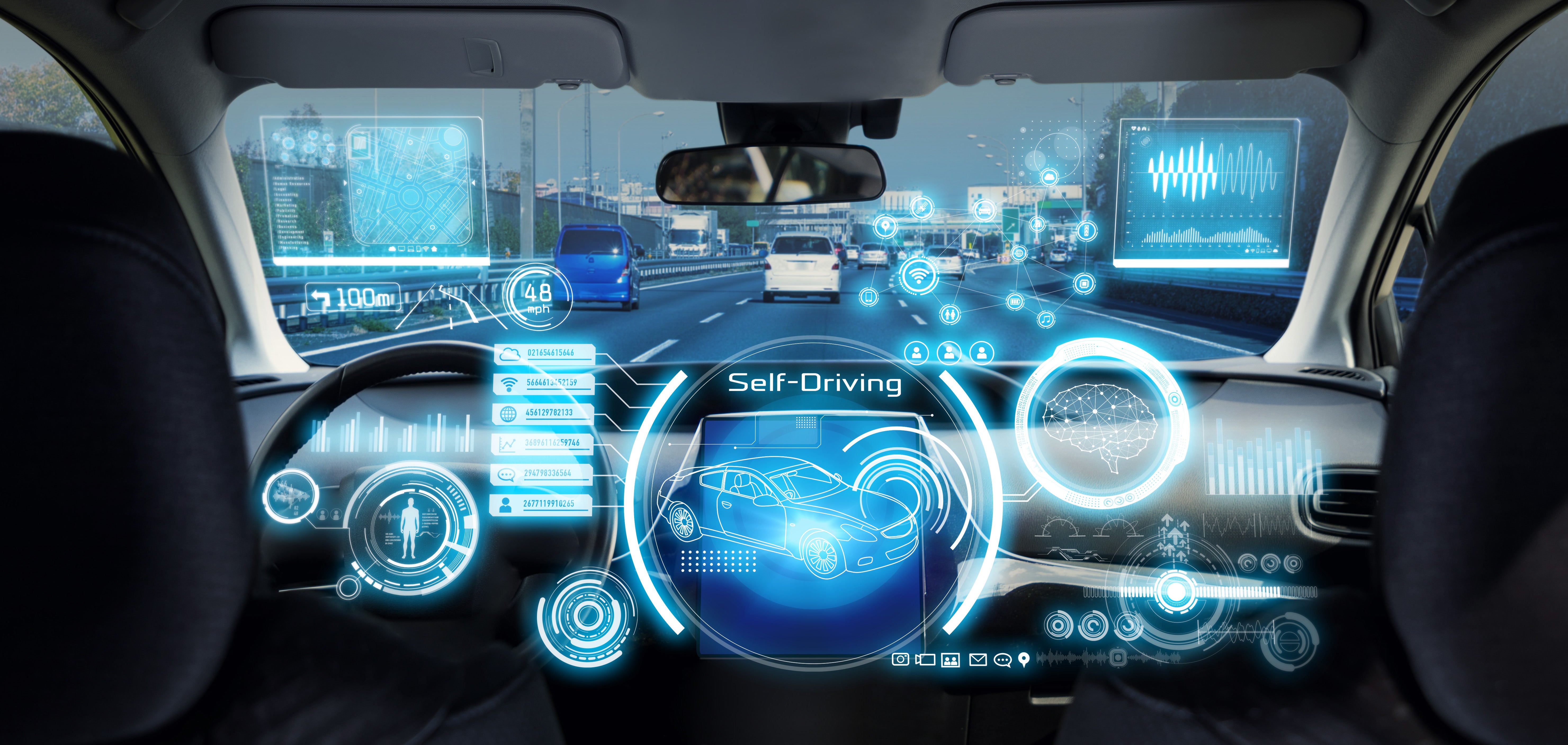Favorable weather for self-driving vehicles
NCAR researchers work to maximize vehicle efficiency in all weather conditions
Feb 23, 2022 - by David Hosansky
Feb 23, 2022 - by David Hosansky

Technologically advanced electric autonomous vehicles will need to run as efficiently as possible in all weather conditions.
Before electric autonomous vehicles can hit the road in large numbers, engineers need to design them to run as efficiently as possible. The vehicles carry an array of sensors and other data-intensive systems that can rapidly drain an onboard battery, running up costs and limiting their ability to travel many miles without recharging.
Now scientists at the National Center for Atmospheric Research (NCAR) are launching a study into a significant consideration for efficient design: the impact of weather conditions. Their work is part of a larger three-year project, led by Western Michigan University, to improve energy efficiency in self-driving cars and trucks, which are eventually expected to be powered by batteries instead of gas.
“Autonomous vehicles are going to use a lot more power because so much processing is happening on board,” said NCAR scientist Curtis Walker, a principal investigator on the project. “Our goal is to determine how we can use weather information to help out the computing load and reduce the power consumption.”
Engineers already know that cold weather can substantially reduce the range of an electric vehicle, as well as lead to longer recharging times.
Walker and his colleagues, including co-principal investigator Amanda Siems-Anderson, are planning to examine weather impacts much more systematically. For example, how does precipitation or wind affect an autonomous vehicle’s efficiency? What are the impacts of a snow-packed road? Does humidity have a major influence?
And how can a self-driving vehicle make adjustments to minimize energy usage in different weather conditions?
The NCAR research is part of a larger project, funded by the U.S. Department of Energy, that will investigate strategies to improve the efficiency of vehicles that require extensive technology to operate autonomously.
"You have all of these sensors that are drawing tons of power being fed into a supercomputer that processes all those sensor outputs and runs cutting-edge artificial intelligence,” said Zachary D. Asher, an assistant professor of aerospace and mechanical engineering at Western Michigan University and the principal investigator of the overall project. “It sounds cool, but it turns out that it uses a lot of energy.”
In addition to NCAR and Western Michigan University, the overall project includes Oak Ridge National Lab and DriveU.auto, thereby bringing together expertise from the academic, government, and private sectors. NCAR is sponsored by the National Science Foundation.
“These types of cross-discipline and cross-sector collaborations are so important and can lead to substantial technological gains,” Walker said.
The NCAR scientists have two overarching goals: identify the impacts of weather conditions on vehicle energy consumption and assess the potential energy savings that could be achieved by using information from various weather sensors.
To achieve the first goal, they will outfit two autonomous vehicles with advanced weather sensors and draw on other local weather observations as they operate the vehicles in a range of driving environments in Michigan and Tennessee. They’ll compare this detailed weather information with data about the minute-by-minute energy consumption of the vehicles in order to zero in on how weather is affecting energy usage.
For the second goal, Walker and his colleagues will assess opportunities for the vehicles to use real-time information from weather sensors in order to maximize energy efficiency. For example, if a car is driving in heavy snow that obscures an optical sensor, it may be possible to turn off the optical sensor. Or if the temperature is so cold that it reduces the battery life, perhaps certain onboard systems could be safely shut down while the vehicle continues to operate in a mode of maximum efficiency.
Walker also wants to see if the vehicles can run longer if they take alternative routes that leverage prevailing weather conditions. For example, are there options for taking advantage of tailwinds or avoiding headwinds?
“If flights can catch a favorable tailwind, perhaps autonomous vehicles could do something similar,” he said. “A basic question is: how can we use weather information from the perspective of route-planning optimization?”
Part of the challenge for the NCAR team will be to identify which weather sensors can be best integrated into a self-driving vehicle’s systems, enabling the vehicle to make adjustments seamlessly to minimize the demands on its batteries.
“We want that battery to last as long as possible, to give you as many miles and hours of driving time as possible so motorists don’t miss the range of their gas-powered vehicles,” Walker said. “Ultimately the goal is for the consumer and driver to have the best possible experience with a technologically innovative vehicle that works optimally in all weather conditions.”
This material is based upon work supported by the U.S. Department of Energy’s Office of Energy Efficiency and Renewable Energy (EERE) under the Vehicles Technology Office Award Number DE-EE0009657. EERE’s Energy Efficient Mobility Systems program provided specific guidance and funding.